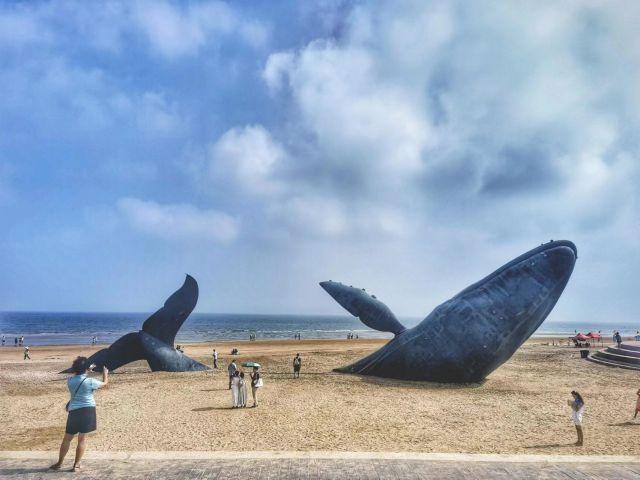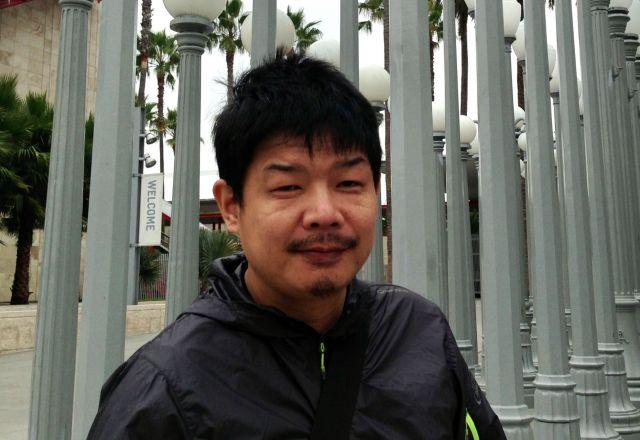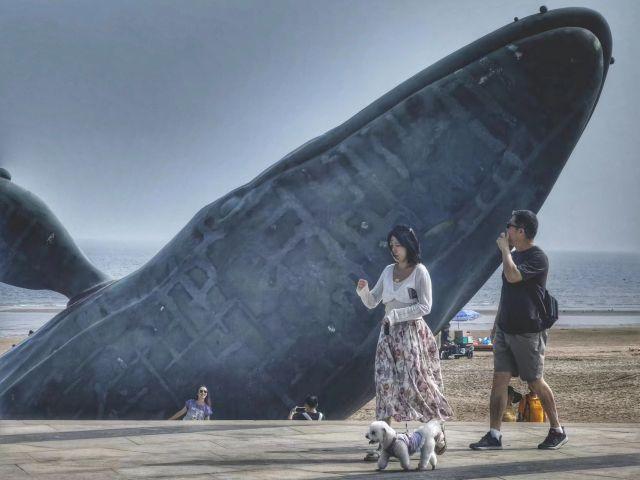Interview with the Designer of Yantai’s “Lonely Whale”: “Loneliness Wasn’t the Intention and Thanks for the Affection”

If you’re looking for must-see attractions in Yantai, the bronze sculpture “Lonely Whale,” located by the seaside in the Yantai Economic & Technological Development Area, should be on your list.
The design of this artwork began in 2014. Central Academy of Fine Arts (CAFA) was selected to implement it in May 2015 through a competitive negotiation, and in May 2016, the sculpture was completed and opened to the public.
A giant whale seems to leap from the golden beach, outlined against the wide blue sky and vast sea, creating a strong psychological impact. Some people interpret it as “loneliness,” others as “freedom,” and some read it as “depth” …
On September 6, the reporter interviewed the designer of the sculpture, Professor Xiong Shitao from CAFA, to explore the story behind the “Lonely Whale”.

Reporter: Hello, Professor Xiong! Your artwork "Lonely Whale" has become an internet- popular site in Yantai. Have you seen it on platforms like TikTok?
Xiong Shitao: Sure. I’m very grateful that people like our artwork. Actually, it was designed by Professor Li Zhen and me quite early on, and it’s unexpected that it has become so popular again recently.
Reporter: When the project team first contacted you, did they specifically request a design about “whale”?
Xiong Shitao: No. They simply expressed the plan to create a sculpture by the seaside without any specific requirements, giving us a lot of freedom. Considering the location, we thought it would be more fitting to make an ocean-themed sculpture. And after further discussions, we decided that a whale shape was the most suitable.
Reporter: Did the concept development process take a long time? And did the design undergo significant changes?
Xiong Shitao: Well, the conceptualization process took about three to six months. Once the overall shape of a whale leaping out of the water was decided, there were no major changes. However, there were several adjustments made in details of how to present the design. We paid much attention to the details, for example, the shape of the whale fins and the relationship between the fins and the body. Later, we also designed a hollow belly to create a slide, adding an element of interaction between the sculpture, the environment, and people.
Reporter: Was the construction process complicated? Some netizens are curious about what’s beneath the beach.
Xiong Shitao: The construction process was indeed challenging. First, the foundation wasn’t very stable by the seaside. Beneath the sand, the whale’s body is about 30 to 40 cm thick; supported by the base. At that time, we had to dig quite deep – around five or six meters – and install ground piles. Additionally, the sculpture is constantly exposed to wind, sand, sea breeze, and waves, which makes it prone to corrosion. To solve the problem, we tested various materials and coatings.
Reporter: Do you have a preference for ocean-themed sculptures?
Xiong Shitao: Actually, this is my first large-scale ocean-themed sculpture. Later, I also worked on a similar project at Daxing Airport, Beijing. I think the ocean is the cradle of life for humanity, and it provides a lot of inspiration for artistic creations.
Reporter: Was “loneliness” the theme you originally intended to express?
Xiong Shitao: The sculpture is called “Deep Breath,” depicting a whale leaping out of the water to breathe freely. What we initially wanted to express was that every joyful leap of the whale is a deep breath of life, taking in the world’s freshest oxygen, gathering strength in the distance, and giving back to the Earth’s selflessness.
Reporter: Netizens have called it “Lonely Whale,” “Stranded Whale,” “Whale Fall,” and even referred to it as “Giant Mackerel of Yantai.” What do you think of these names?
Xiong Shitao: Haha… All of these names are creative. We didn’t think much about it when building it. But after it was completed, I thought of the story of the “52 Hertz Whale: a whale named Alice can only call at the unusual frequency of 52 hertz, while the normal frequency for whale communication is 15-25 hertz. Whether Alice is singing joyfully or crying sadly, no other whale can understand it, so it is called “the loneliest whale in the world”. I believe this is also a “resonance” between the artist and the audience.
Reporter: Is that okay even if the audience’s interpretation deviates from your original intention?
Xiong Shitao: A great artwork has vitality, and its meaning is co-created by both the artist and the audience. There is no one “correct” interpretation of art. The artwork takes on new meanings and vitality through the interpretations of the audience.
Yantai is a very beautiful city. I have visited it many times over the years, and was deeply impressed. I am very grateful for the affection everyone has shown, and I hope the sculpture can integrate into the city’s cultural landscape and become part of its story.


